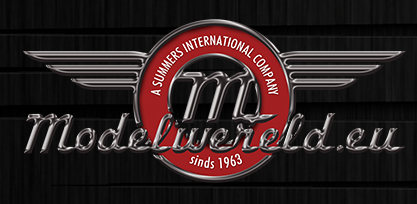40mm Bofors geschut met Morris CDSW 30cwt.6x4 tractor
The British Army had first examined the weapon when they received a number of Polish-built examples in 1937 for testing, known as the "QF 40 mm Mark I" (QF standing for "quick firing"), or "Mark I/2" after a minor change to the flash hider. A licence was acquired and the gun was converted from metric to imperial measurements. They also made numerous changes to the design to make it more suitable to mass production, as the original Bofors design was intended to be hand-assembled, and many parts were labeled "file to fit on assembly", requiring many man-hours of work to complete.
Testing showed that aiming the guns against high-speed aircraft was a serious problem. Although the gun could be trained quickly, aiming accurately while doing so proved difficult. In order to address this, the British introduced a complex mechanical analogue computer, the Kerrison Director, which drove the laying electrically. A three-man team operated the director simply by pointing it at the target and dialing in estimates for range and various atmospheric conditions. The director then aimed the guns directly through powered mounts, as the gunners loaded the clips. Backup sights were fitted to the individual guns, replacing the former reflector sight and lead-calculator with a ring-and-post sight known as a "pancake".
In this form, the "QF 40 mm Mark III" (Mk II was a designation used for a Vickers "pom-pom"), became the Army's standard light AA (anti-aircraft) weapon, operating alongside their 3-inch and 3.7-inch heavy weapons. The gun was considered so important to the defence of England after the fall of France in 1940 that a movie, The Gun, was produced to encourage machinists to work harder and complete more of them. By the end of the war total production from British, Canadian, and Australian factories was over 2,100, while U.S. lend-lease examples added about 150.
In combat it was found that the Kerrison was difficult to set up to use in many situations, as well as making logistics more complex due to the need to keep its electrical generator supplied with fuel. In most engagements only the pancake sights were used, without any form of correction, making the British versions less capable than those used by other forces. Eventually an anti-aircraft gunnery school on the range at Stiffkey on the Norfolk coast delivered a workable solution, a trapeze-like arrangement that moved the pancake sights to offer lead correction, operated by a new crew-member standing behind the left-hand layer. The "Stiffkey Sight" was sent out to units in 1943, arriving in Canadian units in the midst of the Battle of the Aleutian Islands. A final wartime change to the elevation mechanism resulted in the "QF 40 mm Mark XII". They also designed a much lighter two-wheeled carriage for airborne use.
The Army also experimented with various self-propelled AA systems (SPAAGs) based on various tank chassis. Changes to the breech for this role created the "QF 40 mm Mark VI", which was used on the Crusader to produce the Crusader III AA Mark I. The main self-propelled version of the Bofors used the gun set on the chassis of a Morris Commercial four-wheel drive lorry. Such guns were used in support of Army divisions to provide swift protection against air attack without the need to unlimber. this was known as the "Carrier, SP, 4x4 40mm, AA (Bofors) 30cwt". They saw service in North West Europe, where six SP Bofors of 92nd (Loyals) Light Anti-Aircraft Regiment, Royal Artillery, landed with the British 3rd Infantry Division on Sword Beach on D-Day to protect the vital bridges over the Caen Canal and Orne River (Pegasus Bridge and Horsa Bridge), shooting down 17 German planes. Later in the campaign, SP Bofors were used extensively for ground shoots as well as in an anti-aircraft role. In British army service the Bofors found a highly specialised role: during the North Africa Campaign at the Battle of El Alamein, they were used to fire tracer horizontally to mark safe paths for units through the German minefields. This practice was further developed during operations in North-West Europe, where bursts of colour-coded tracer were used to define the axis of advance of the different formations in large-scale night attacks.
Een uitvoering mogelijk;
-
40mm Bofors geschut met Morris CDSW 30cwt.6x4 tractor - 15th Light Anti-Aircraft Regiment, 7th Armoured division, North Africa, 1940.
Afmetingen;
Aantal onderdelen: 107
Humbrol verf kleur nr.'s; 33 / 54 / 61/ 72 / 93 / 121.
Schaal 1:76
Released by Airfix in 1995.
Airfix A02314


